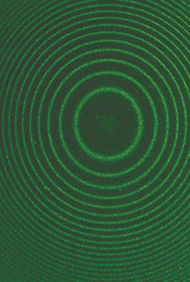Injection Seeding
Injection seeding is the process where a low-power single-frequency laser is used to inject a small optical signal into a power amplifier to produce high-power single-frequency laser output. This technique is often used, for example, with Nd:YAG lasers, but the principle applies to other types of lasers as well. Systems can be pulsed or continuous wave (CW). The amplified high-power single-frequency laser light can then be used for applications such as atomic or molecular spectroscopy, photon Doppler velocimetry (PDV), velocity interferometry system for any reflector (VISAR), and laser Doppler velocimetry (LDV).
NP Photonics manufactures single-frequency continuous-wave (CW) and custom quasi-continuous-wave (QCW) and pulsed lasers for seeding high-power neodymium (Nd) lasers.

CW:
Q-switched and ultrafast lasers. NP Photonics' all-fiber Q-switched and ultrafast lasers are customizable in erbium (1.55-micron band), ytterbium (1.0-micron band), thulium and holmium configurations (2-micron). Contact us for more details.
Low-noise, narrow-linewidth, single-frequency, continuous-wave (CW) lasers. NP Photonics' single-frequency fiber lasers provide exceptionally low noise performance in both erbium (1.55-micron band) and ytterbium (1.0-micron band) configurations with output power available up to 50W.
QCW:
Quasi-continuous wave lasers. NP Photonics' all-fiber lasers are customizable in erbium (1.55-micron band), ytterbium (1.0-micron band), thulium and holmium configurations (2-micron). Contact us for more details.

